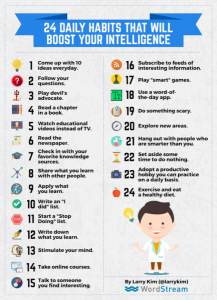In a modern, sensationalist media driven world, one industry or another always appears to be on the verge of extinction.
Last year it was the traditional SEO industry, which was deemed to be moribund in the face of constantly evolving Google algorithms and the proliferation of content marketing. While the boundaries of SEO may have changed to become more content- focused, however, it is arguably more important than ever as a strategic marketing tool.
Now it conventional television that is under the microscope, with the most recent Nielsen report revealing that viewership figures for this medium fell by 4% during the final financial quarter of 2014. In contrast, the figures for online streaming and video on demand (VOD) increased by 60%, crystallizing a trend that has evolved over the course of the last decade.
When Two Mediums Collide: How to use VOD and TV Advertising as part of an Integrated Campaign
While these headline statistics are used to prove the reported declining appeal of television advertising, they should be placed in their proper context. After all, the average American still watches more than 141 hours of live or traditional television each month, and while the total number of hours spent watching streamed content during the same period has risen it remains comparatively low at just 11. So while VOD and online viewership may eventually supersede television in the next decade, both mediums will be forced to co-exist with one another for the foreseeable future.
This is something that modern businesses cannot ignore, and it is crucial that entrepreneurs are open to using both VOD and television advertising as part of an integrated, online marketing campaign. To achieve this, you will need to understand both mediums while learning how and when to use each effectively: –
VOD: The Platform for Non-premium and experimental Marketing
In basic terms, the rise of VOD and online streaming continues to be exponential, with YouTube alone boasting more than one billion unique users on a monthly basis. When you also consider that there is also a host of additional viewership resources such as Vimeo, VOD is clearly a growing concern with huge potential.
It does not yet have the mainstream presence of television, however, meaning that it has some shortfalls and restrictions when it comes to marketing. It is not necessarily ideal for promoting high-end premium products, for example, as the cost of manufacturing and retailing these often demands a high volume of sales if they are to be profitable. VOD may also be unsuitable for relatively staid products or services, as the heavily populated and competitive nature of this medium means that content must have an engaging hook and the potential to go viral if it is to truly succeed.
In this respect, VOD should be primarily used to market non-premium products or host experimental campaigns, particularly those that can make a striking visual impact during a 20-30 second online slot. Costs are usually determined per one thousand views, so this provides an affordable medium that can minimize the risk of marketing cheaper or unconventional projects. On a final note, you can also consider using VOD in an auxiliary role that supports mainstream campaigns through short and memorable online slots that are shared online.
TV Advertising: A Selective Medium for Premium Campaigns
The appeal of television is enduring, and while it may be on the wane it remains a crucial marketing medium in 2015. Its high cost is beyond the budgets of many small and independent ventures, however, while its supposedly diminishing returns may also deter larger brands from investing in television airtime. Even allowing for this, there is no doubt that television remains a key battleground for premium brands and products while it can highly effective so long as marketers are selective in terms of their content and activity.
To understand this further, it is important to look at the costs associated with procuring airtime. While it can cost as little as $ 500 to produce and develop a 30-second advertisement for local television spots, for example, this can rise to nearly $ 350,000 for national exposure. In terms of securing airtime, the cost of a peak or prime-time television slot can range between $ 400,000 and $ 500,000, which instantly prices many smaller businesses out of the market. This is why television advertising is such an extreme and challenging medium, as while the cost of peak slots are prohibitive they are considered by many to be the only viable way of executing a successful TV marketing campaign.
If you do have the capital to invest in a sustained assault on the prime-time television airways, you need to ensure that you select the right product and channels to ensure a profitable campaign. Customer profiling plays a huge role in TV advertising, as each channel (and there are many of them) has its own viewing demographics and commands a regular audience. You must therefore be able to align your premium product of choice with a specific target market, choosing the most suitable channels to engage your audience.
This type of detailed approach will help you to calculate the potential profitability of your campaign and estimate your ROI before making a final decision.
As you can see, both mediums have their merit in 2015 and this will remain the case for the foreseeable future. Combining both within a selective and integrated campaign is crucial for well-resourced businesses, in particular, as it optimizes their market reach and enables them to execute targeted and ultimately profitable campaigns.
Digital & Social Articles on Business 2 Community(88)
Report Post




